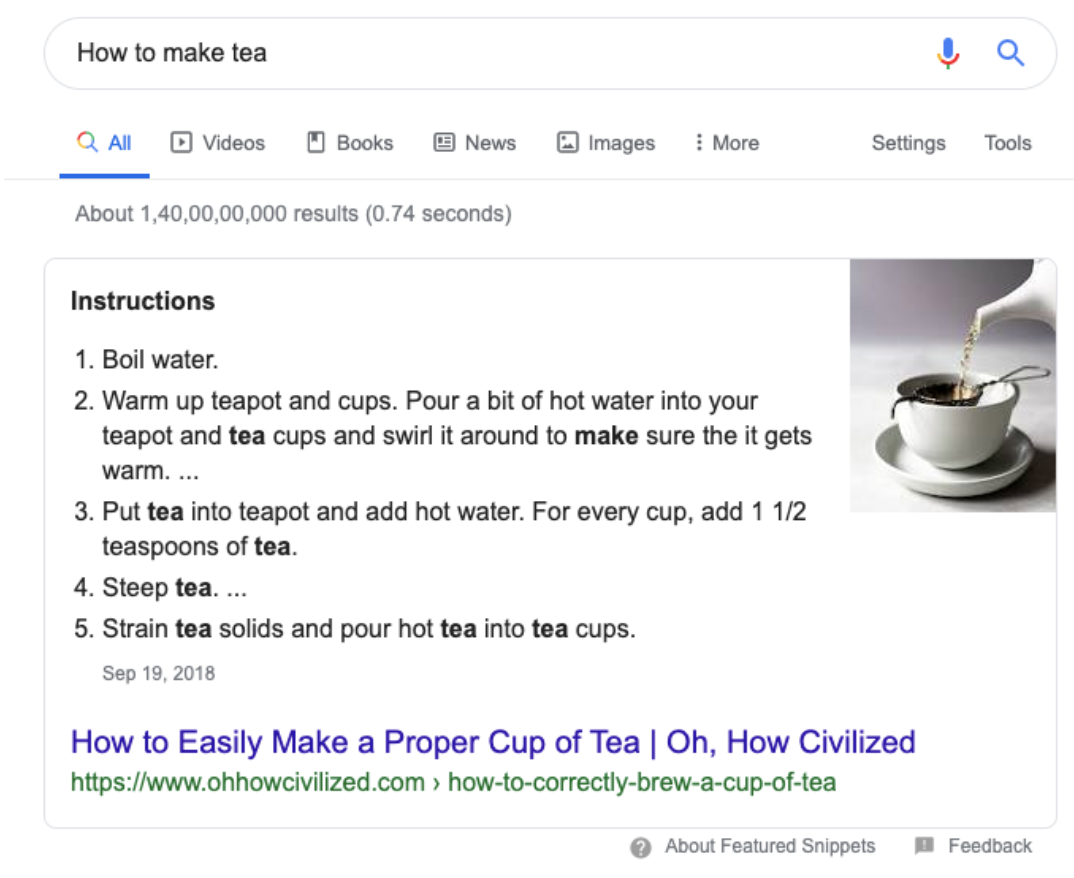You must be wondering ‘another post on how to improve your rankings in 2020, what new is this author going to tell me?’
It is understandable because, to no-one’s surprise, there’s plenty of content out there filled with a great deal of information.
I too, have gone through most of them and couldn’t help but notice that a majority of the posts were SEO centric.
Therefore, I was motivated to create this post, which provides you with actionable ways to create valuable and high-quality content by focusing on a bit of SEO.
Repurpose Your Old Blog Posts
First off, let’s do away with the content that we’ve published already.
Old blog posts still have enough ranking potential given if you repurpose them smartly. Begin by signing in to your site’s Google Analytics. When signed in, follow this trail from the left-side menu:
Behavior>Site Content >All Pages
The window you face now contains URLs of all your web pages along with supplementary information like:
- Page Views
- Unique Page Views
- Avg. Time On Page
- Entrances
- Bounce Rate
- %Exit
- Page Value
IMPORTANT. Specify a 1-year time span until today in the calendar (upside-right corner).
Out of all the metrics mentioned-above, focus more on the page views, unique page views, and bounce rate. Based on the analyses of these metrics, bifurcate the pages into three categories:
- Remove: Eliminate the pages with page views of 200 or less.
- Recycle: Repurpose the content that you think can resonate with your current audience and still has the potential to boost the traffic.
- Reuse: Identify the pages consisting of outdated information and update them with the latest data.
How to repurpose your old blog posts?
Step I: Add Latest Information
When repurposing your old blogs, research on the topic again and check hyperlinks for any 404 errors. Google wants to index and rank content that is valuable in 2020 because readers want to interact with the latest information.
Step II: Fresh Keyword Research & SEO Meta Data
Keywords age too. One that received the search volume of 150,000 in 2015 may only get 150 in 2020. Hence, you must perform keyword research on the blog topic again and compose fresh SEO metadata as well accordingly.
Step III: Turn Old Blogs Into Other Content Formats
Recycling your old blog posts into other content formats can boost their performance and success rate. You can transform them into popular content formats like:
- Infographics
- eBooks
- Videos
- Podcasts.
Step IV: Promote Extensively
Just repurposing them isn’t going to do wonders for your site’s online visibility. You need to promote each updated and recycled post extensively to increase their discoverability by the search engine crawler. Some of the popular ways to promote your content are:
- Social Media Marketing
- Email Marketing
Recommended reading: What To Do With Your Old Blog Posts In 2020
Optimize for Featured Snippets
Featured Snippets are a nightmare for webmasters. After Google started enhancing the SERPs with more user-friendly search results, acquiring top organic ranks has become more competitive.
Reason being, after featured snippet update, 49% of all Google searches resulted in no-click. Wikipedia was affected most by these snippets because ever since their launch the online encyclopedia lost 21% of their traffic.
How to optimize for featured snippets?
Target Question-based Keywords
Featured snippets appear for question-based keywords majorly. For instance, if you search for ‘how to make tea?’ Here’s how the results will appear in the SERP:

Did you notice the preciseness of the result?
You are provided with an immediate solution to your query. If you want more details on it, you can click on the link and learn more.
Since these appear on top of the other search results, the featured snippets are sometimes referred to as ‘Rank Zero’.
To increase your chances of acquiring a featured snippet, optimize for long-tail and question-based keywords.
Produce High-quality & Structured Content
Whether you aim for a featured snippet or not, producing high-quality content and structuring it is still essential. You must be precise and use appropriate meta tags.
For instance, specify a heading tag for each heading and subheading:
<h1>Main Heading</h1>
<h2>Subheading</h2>
<h3>Sub-subheading</h3>
<h3>Sub-subheading</h3>
<h2>Subheading</h2>
<h3>Sub-subheading</h3>
<h3>Sub-subheading</h3>
That’s how you structure your content.
It is best advised to include only one H1 tag and limit the other heading tags to H6 and not beyond.
Include an FAQ Section
SERPs also have a ‘People also ask’ section, which is self-explanatory. They are positioned below the featured snippet

Generally, Google extracts the solution to these queries from FAQ sections of websites, which means that including an FAQ section along with question-based headings in your content can increase its probability of acquiring a featured snippet.
Recommended reading: Google Featured Snippets: How to Optimize Your Content for RANK ZERO
Prioritize User’s Search Intent
High-quality content is a byproduct of content that is optimized based on the searcher’s intent. Once you understand what the user wants, it will become easier for you to create content that is bound to perform astonishingly well in the SERPs, because of two reasons:
- You are providing user’s EXACTLY what they are looking for.
- Since users are satisfied with your content and find it helpful; Google will rank your content higher in the SERPs.
How to optimize users’ search intent?
Identify the users’ intent
Before optimizing, you must know how to identify the users’ intent behind the search. Start with performing a search related to the topic of your content. For instance, if I am writing a tutorial on ‘How to make tea?’, I’ll search for the same on Google.
After that, I’ll start analyzing the results on the first page while ignoring the advertisements (because they paid for that position). By analyzing those results, how the topic has been covered by those websites. Also, I’ll go through the self-explanatory sections on the first SERP:
1. People also search for

2. Searches related to…

These are enough to identify what kind of solution your users consider valuable and what kind of solutions they want.
You can optimize your content according to this data and may as well use these terms as keywords.
Focus on 5Ws and 1H
Again, question-based keyword research and optimization. People perform searches focussing on 5Ws and 1H:
- Who
- What
- When
- Where
- Why
- How
These are the primary keywords for each topic that every user wants to be resolved. So, answering most of these queries, you’ll create content that your users will find helpful and valuable.
You can use CRM software like Nimble to analyze your customer information and go through the chats you’ve had with them on various platforms. Studying those conversations will give you an idea as to what your audience wants and the type of issues they face. You can formulate your content accordingly based on that information.
Precision is key
Precision is the common factor when creating content that improves your rankings. You must be precise, exact, and to the point in your content.
Recommended reading: Learn How To Identify & Optimize For User’s Search Intent
Publish Content Produced by Experts
Last year, Google published its Search Quality Guidelines. In them, the market-dominating search engine has put a lot of emphasis on 3 things:
- Expertise
- Authoritativeness
- Trustworthiness
In short, this is called E-A-T.
These measures are motivated towards improving the quality of search results provided to the users. Also, Google recommends websites to publish content written by experts, especially in the health sector:

This is just one section of the 168-page guideline PDF published by Google. So, it will take time to go through it all, but you must read the entire guidelines to understand better the type of content Google expects from webmasters.
Recommended reading: SEO In 2020: The Definitive Guide To Rank Top In Google SERP
Simplify Complex Information
“Genius might be the ability to say a profound thing in a simple way.”
-Charles Bukowski
The internet receives a footfall of millions of people looking for valuable information. These include beginners as well as advanced marketers and when you are writing content, produce it for any average reader.
Focus on using simpler terms and not too many industry jargon and create images that can help the readers grasp even the most complex concepts with ease and convenience.
Recommended reading: 6 Tips to Help Make Your Content Stand Out from Your Competitor’s Content
Conclusion
If you want your content to succeed in 2020, you MUST focus on quality because Google wants to provide users with quality results. Moreover, the users also want quality results to their queries.
So, what are you waiting for? You have 100% actionable ways to create content that can improve your rankings in 2020!


